
| Gabi Moth, Vine Hawk Moth (one synonym : Elpenor phoenix Oken, 1815) MACROGLOSSINAE, SPHINGIDAE, BOMBYCOIDEA | (donherbisonevans@yahoo.com) and Stella Crossley |
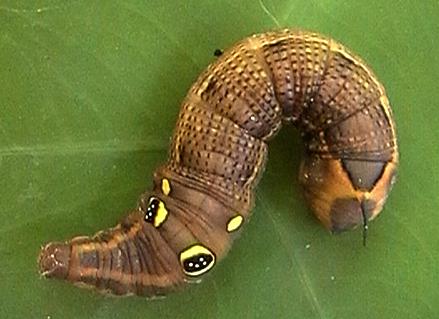
Brown form
(Photo: courtesy of Jon Rose)

| Gabi Moth, Vine Hawk Moth (one synonym : Elpenor phoenix Oken, 1815) MACROGLOSSINAE, SPHINGIDAE, BOMBYCOIDEA | (donherbisonevans@yahoo.com) and Stella Crossley |

Brown form
(Photo: courtesy of Jon Rose)
This Caterpillar occurs world-wide. It can occur in several different colour forms: green, brown, red or dark grey. It usually has an eyespot each side of the first and the second abdominal segments, those on the first segment being larger.
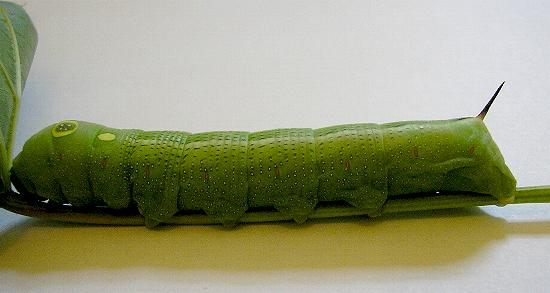
The first and larger eyespot is usually black with a pale ringed outline, and contains four pale spots. There are variable cryptic stripes and bands along the rest of the body. The caterpillar has a tailhorn curved slightly backwards which tapers to a point.

In the tropics, it is a pest on
It also feeds on many other ornamental plants and crops, including :
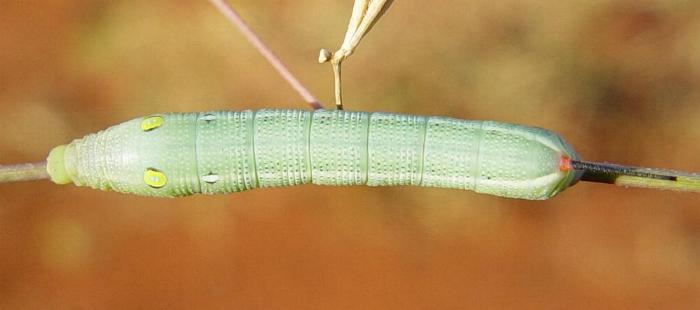
When disturbed, the caterpillar curls into the shape of a letter 'C', tucks its head under its thorax, and expands the segments with the eyespots. No doubt these distract and deter possible predators.
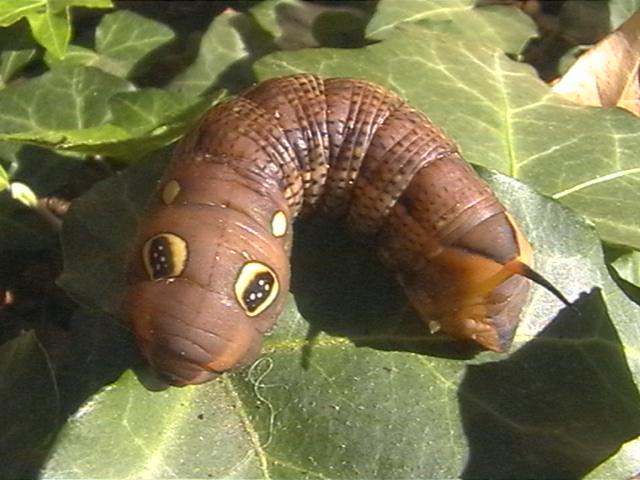
The caterpillar can grow to a length of 8 cms. It pupates in a shelter made from debris on the ground, The pupa has a length of about 4.5 cms. It is brown, with pale wing cases marked by dotted dark lines.
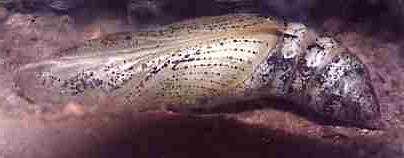
The adult moth has striped brown and white forewings, red hind wings, and a long tongue, with which it can suck nectar from flowers while hovering in front of them. It has a wingspan of about 6 cms.
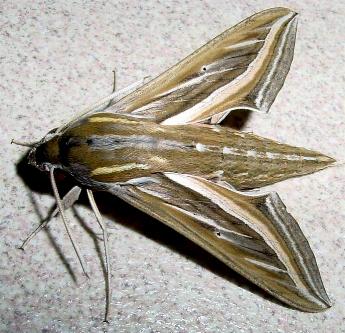
The moth can usually be seen in the morning or evening twilight, hovering above flowers, and sipping nectar through its uncurled haustellum.
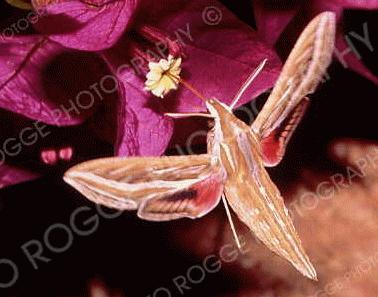
The pheromones of this species have been identified. The moth is agriculturally important as it is one of several species largely responsible for the pollination of Papaya ( Chamaedorea tepejilote ).
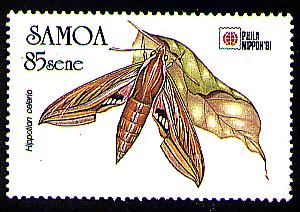 Samoa 1991 | 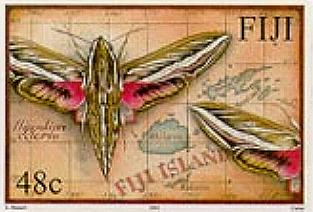 Fiji, 2001 |
The species occurs worldwide except for the Americas, eg: in

as well as in Australia including
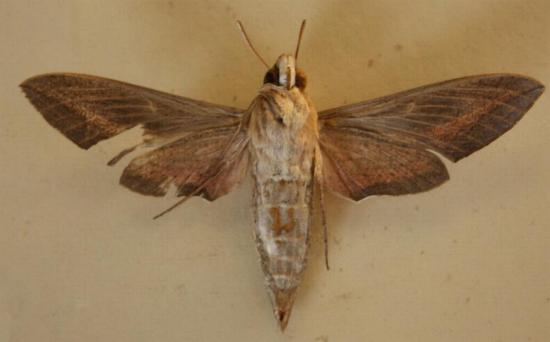
Further reading :
David Carter,
Butterflies and Moths,
Collins Eyewitness Handbooks, Sydney 1992, p. 245.
Ian F.B. Common,
Moths of Australia,
Melbourne University Press, 1990, pp. 67, 412.
Carl Linnaeus,
Insecta Lepidoptera,
Systema Naturae,
Volume 1, Edition 10 (1760), Class 5, Part 3, p. 491, No. 10.
Peter B. McQuillan, Jan A. Forrest, David Keane, & Roger Grund,
Caterpillars, moths, and their plants of Southern Australia,
Butterfly Conservation South Australia Inc., Adelaide (2019), p. 100.
Peter Marriott,
Moths of Victoria - Part 1,
Silk Moths and Allies - BOMBYCOIDEA,
Entomological Society of Victoria, 2008, pp. 28-29.
Maxwell S. Moulds, James P. Tuttle and David A. Lane.
Hawkmoths of Australia,
Monographs on Australian Lepidoptera Series, Volume 13 (2020),
pp. 135-138, Plates 29, 77, 87.
Buck Richardson,
Tropical Queensland Wildlife from Dusk to Dawn Science and Art,
LeapFrogOz, Kuranda, 2015, p. 201.
 caterpillar |  butterflies |  Lepidoptera |  moths |  caterpillar |
(updated 7 April 2013, 14 October 2025)